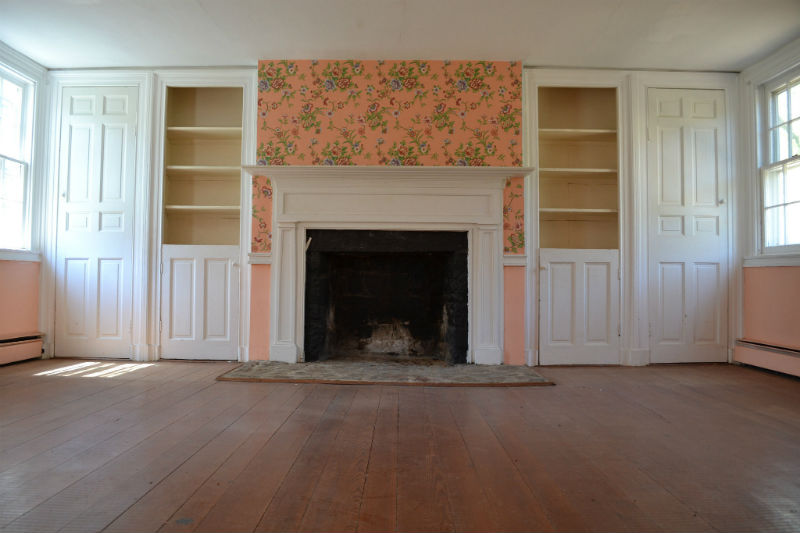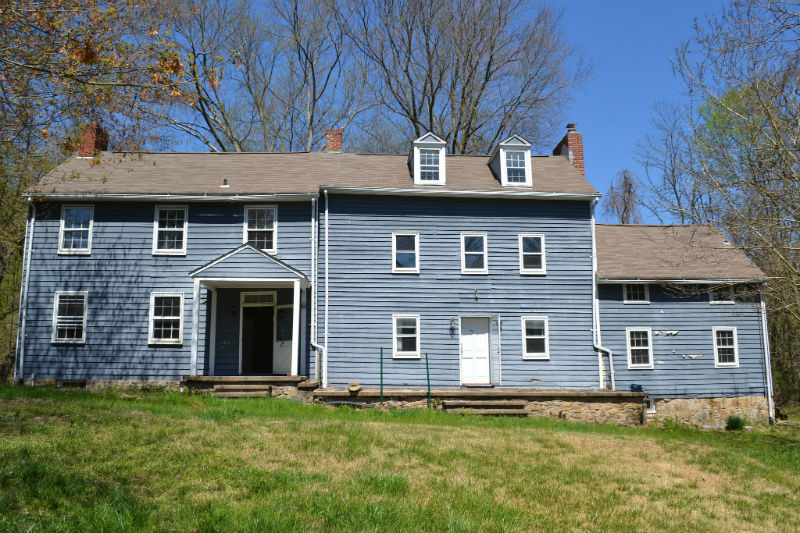Does living in a historic house located within one of Maryland’s scenic State Parks, Natural Resource Management Areas or other protected state lands sound like a dream come true? The James Stephenson House in Susquehanna State Park is now available through Maryland’s Resident Curatorship Program.
James Stephenson House in Susquehanna State Park
The Stephenson House is a beautiful example of a late 18th/early 19th century dwelling which retains a great deal of its historic detailing; including gorgeous wood floors, original trim, four fireplaces with decorative mantels and a large cooking hearth. The house contains a kitchen, dining room, family room and parlor on the first floor, three bedrooms and two baths on the second floor, and an additional two rooms in the finished section of the attic.

The property encompasses approximately 9 acres of the surrounding land which includes a 19th century smoke house (converted to a chicken house) as well as a 19th century laundry or quarter. There is also a substantial corn crib located on the property but it is, unfortunately, in poor condition. The property is in close proximity to the park trail system and all the amenities Susquehanna State Park has to offer.
The Department is looking for a partner to restore the house within a 5-7 year period. Families, non-profits, and commercial entities are welcome to apply as long as their vision for the property is in keeping with preservation standards and the mission of the Department of Natural Resources. Tours of the property are available by appointment only or at scheduled open houses; Saturday, May 27, 2017, 10am-3pm, Friday, June 9, 2017, 10am-3pm, Saturday, June 24, 2017, 10am-3pm.
MORE INFORMATION
- The Request for Proposals is due by July 31, 2017.
- Go to the Resident Curatorship Program homepage for information on this and other available properties:
- Contact Program Manager, Peter Morrill at peter.morril1@maryland.gov or 410-260-8457
MARYLAND DEPARTMENT OF NATURAL RESOURCES RESIDENT CURATORSHIP PROGRAM
The Resident Curatorship Program was begun in 1982 in an effort to preserve state-owned historic resources. As the largest landholder in the state, Department of Natural Resources (DNR) owns many historically significant sites and structures. Some of these, like Fort Frederick in Washington County or Rock Run Mill in Harford County, are operated as museums while others are used for park operations and staff housing. Unfortunately, given the realities of tight budgets and an excess of buildings, not all of the historic structures in the department’s portfolio can be maintained.
This is where the Resident Curatorship Program comes in.
Rather than allow these historically significant properties to fall into ruin, the Resident Curatorship Program offers them to the general public for restoration. Curators are responsible for all costs associated with restoration and maintenance of the property but receive life tenancy free of rent in exchange for their efforts. Because the property remains in possession of the state, it is also exempt from state-levied property taxes.
Since its inception in 1982, the program has grown to include 48 properties throughout the state and has leveraged over $11.6 million dollars of private investment in state owned real estate. This successful program has been the model for similar efforts in other states such as Massachusetts and Delaware.

